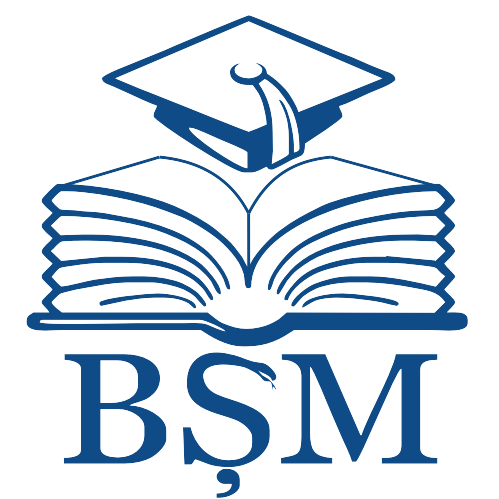|
|
- IRMS - Nicolae Testemitanu SUMPh
- REVISTE MEDICALE NEINSTITUȚIONALE
- Sănătate Publică, Economie şi Management în Medicină
- Sănătate Publică, Economie şi Management în Medicină 2024
- Sănătate Publică, Economie şi Management în Medicină Nr. 5(102) / 2024
Please use this identifier to cite or link to this item:
http://hdl.handle.net/20.500.12710/30866
| Title: | Provocări actuale în diagnosticul și tratamentul deficitului de testosteron la bărbații de vârstă reproductivă |
| Other Titles: | Challenges in diagnosis and treatment of testosterone deficiency in reproductive-aged men
Актуальные проблемы диагностики и лечения дефицита тестостерона у мужчин репродуктивного возраста |
| Authors: | Arian, Iurie
Dumbrăveanu, Ion
Ghenciu, Victoria
Bogdanov, Alan
Creciun, Mariana
Ceban, Emil |
| Keywords: | testosterone deficiency;testosterone replacement therapy;male infertility;hypogonadism;fertile age |
| Issue Date: | 2024 |
| Publisher: | Asociația Obștească "Economie, Management și Psihologie în Medicină" din Republica Moldova |
| Citation: | ARIAN, Iurie; Ion DUMBRĂVEANU; Victoria GHENCIU; Alan BOGDANOV; Mariana CRECIUN and Emil CEBAN. Provocări actuale în diagnosticul și tratamentul deficitului de testosteron la bărbații de vârstă reproductivă. Sănătate publică, economie şi management în medicină. 2024, nr. 5(102), p. 155-161. ISSN 1729-8687. https://doi.org/ 10.52556/2587-3873.2024.5(102).23 |
| Abstract: | Rezumat
Actualmente, un număr tot mai mare de bărbați tineri și de
vârstă mijlocie sunt în căutarea tratamentului pentru simptomele legate de nivelul scăzut de testosteron, care includ depresia, oboseala cronică, libidoul scăzut, disfuncția erectilă și/sau
infertilitatea. În situațiile în care conceperea unui copil nu este
un obiectiv pe termen scurt sau mediu, prezervarea funcției
reproductive necesită a fi considerată în contextul tratamentului oferit. Având în vedere caracterul adeseori idiopatic al
deficitului de testosteron, în special pentru bărbații de vârstă
reproductivă, alegerea metodei de tratament devine și mai
dificilă, în contextul în care evidența științifică și gradul de recomandare a diverselor tratamente sunt slabe. A fost efectuată
analiza literaturii contemporane, cu utilizarea principalelor
baze de date, inclusiv PubMed, Hinari, SpringerLink și Scopus
(Elsevier). S-a constatat că o treime dintre bărbații infertili cu
vârsta sub 50 de ani sunt hipogonadali. Corelarea rezultatului spermogramei cu nivelul de testosteron a identificat un
deficit la 16,7% dintre bărbații cu azoospermie obstructivă,
45% dintre bărbații cu azoospermie non-obstructivă, 42,9%
dintre bărbații cu oligozoospermie și/sau astenozoospermie și
35,3% dintre bărbații cu parametri normali ai spermei. Terapia de substituție cu testosteron, deși eficientă în abordarea
majorității simptomelor hipogonadismului, are efecte negative
asupra funcției testiculare. Consilierea ar trebui să includă
o discuție amănunțită a riscurilor și beneficiilor, cu accent
pe supresia spermatogenezei pentru bărbații de vârstă reproductivă care doresc să-și mențină potențialul de reproducere.
Summary
Currently, an increasing number of young and middle-aged
men are seeking treatment for symptoms related to low testosterone levels, which include depression, chronic fatigue,
low libido, erectile dysfunction and/or infertility. In situations
where conceiving a child is not a short- or medium-term
goal, the preservation of reproductive function needs to be
considered in the context of the treatment offered. Testosterone deficiency is often of unknown origin especially in men of
reproductive age, and the choice of treatment method becomes
even more difficult, in the context where the scientific evidence
and degree of recommendation of various treatments is weak.
Literature review was performed using major databases including PubMed, Hinari, SpringerLink and Scopus (Elsevier).
One third of infertile men under the age of 50 were found
to be hypogonadal. Correlation of spermogram result with
testosterone level identified deficiency in 16.7% of men with
obstructive azoospermia, 45% of men with non-obstructive
azoospermia, 42.9% of men with oligozoospermia and/or
asthenozoospermia and 35.3% of men with normal sperm parameters. Testosterone replacement therapy, although effective
in addressing most symptoms of hypogonadism, has negative
effects on testicular function. Counseling should include a
thorough discussion of risks and benefits with an emphasis
on spermatogenesis suppression for men of reproductive age
who wish to maintain their reproductive potential.
Резюме
В настоящее время все большее число мужчин молодого
и среднего возраста обращаются за лечением по поводу
симптомов, связанных с низким уровнем тестостерона,
которые включают депрессию, хроническую усталость,
низкое либидо, эректильную дисфункцию и/или бесплодие. В ситуациях, когда зачатие ребенка не является
краткосрочной или среднесрочной целью, сохранение
репродуктивной функции необходимо рассматривать в
контексте предлагаемого лечения. Дефицит тестостерона часто имеет неизвестное происхождение, особенно
у мужчин репродуктивного возраста, и выбор метода
лечения становится еще более трудным в контексте,
когда научные данные и степень рекомендаций различных методов лечения слабы. Обзор литературы проводился с использованием основных баз данных, включая
PubMed, Hinari, SpringerLink и Scopus (Elsevier). У трети бесплодных мужчин в возрасте до 50 лет выявлен
гипогонадизм. Корреляция результата спермограммы
с уровнем тестостерона выявила его дефицит у 16,7%
мужчин с обструктивной азооспермией, у 45% мужчин
с необструктивной азооспермией, у 42,9% мужчин с
олигозооспермией и/или астенозооспермией и у 35,3%
мужчин с нормальными показателями спермы. Заместительная терапия тестостероном, хотя и эффективна
в устранении большинства симптомов гипогонадизма,
оказывает негативное влияние на функцию яичек. Консультирование должно включать тщательное обсуждение рисков и преимуществ с акцентом на подавление
сперматогенеза для мужчин репродуктивного возраста,
желающих сохранить свой репродуктивный потенциал. |
| metadata.dc.relation.ispartof: | Sănătate Publică, Economie şi Management în Medicină |
| URI: | https://doi.org/ 10.52556/2587-3873.2024.5(102).23
https://revistaspemm.md/wp-content/uploads/2024/10/2024_CM5102_2024_octombrie_COLOR.pdf
https://repository.usmf.md/handle/20.500.12710/30866 |
| ISSN: | 1729-8687 |
| Appears in Collections: | Sănătate Publică, Economie şi Management în Medicină Nr. 5(102) / 2024
|
Items in DSpace are protected by copyright, with all rights reserved, unless otherwise indicated.
|


